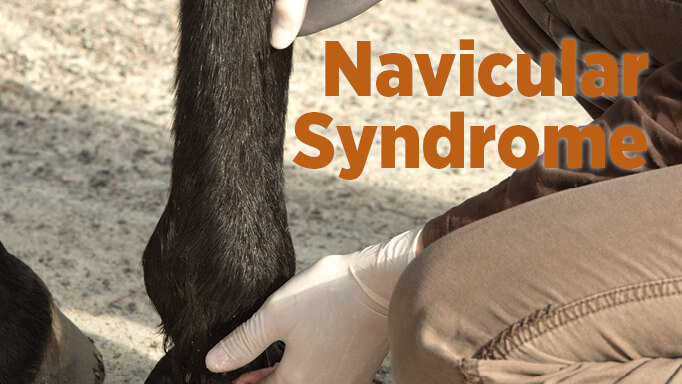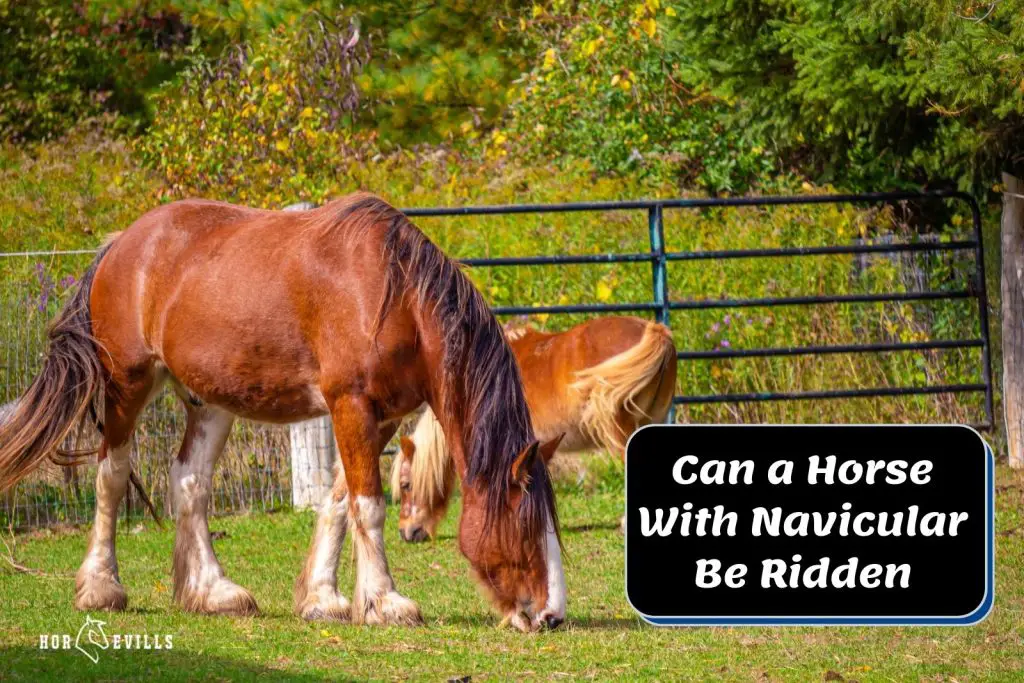Can a horse with navicular be ridden? Yes, a horse with a navicular can be ridden. Navicular disease is an inflammation of the navicular bone and associated soft tissues that occur when the structures in the foot are over-stressed due to improper trimming or riding on hard surfaces. Horses with mild cases of navicular may not show any symptoms but more severe cases will experience pain and lameness which can limit their ability to perform as desired.
In these cases, it is important to work closely with your veterinarian and farrier to manage the condition through medications, changes in diet, shoeing modifications, and exercises designed specifically for horses with navicular disease. If managed correctly and given ample time to rest between rides, many horses with mild forms of navicular can still be ridden safely.
Riding a horse with Navicular Syndrome can be a challenging endeavour for both the horse and rider. While it is possible to ride horses with this condition, care must be taken to ensure the horse’s comfort and safety. An experienced veterinarian should evaluate the horse’s health and soundness before any riding begins.
The rider should also use caution when mounting, dismounting, or performing any other activities that involve significant stress on the animal’s feet or legs. With appropriate management, horses with Navicular Syndrome can still have enjoyable and successful careers under saddle.
When to Euthanize a Horse With Navicular
When it comes to determining when to euthanize a horse with navicular, there are several factors to consider. A veterinarian should evaluate the horse’s quality of life and assess the severity and progression of the symptoms. In some cases, treatment options may be available that can help improve or alleviate pain; however, if these treatments fail or are not feasible due to finances or other circumstances, euthanasia may be necessary in order for the horse to no longer suffer from chronic discomfort.
Ultimately, this difficult decision must be made by both owner and veterinarian based on what is best for the animal’s health and wellbeing.

What Can You Do for a Horse With Navicular?
Navicular disease is a condition that affects the horse’s navicular bone, located at the back of the pastern joint. It can be caused by trauma or infection, and it is characterized by inflammation, pain and stiffness in the affected area. To treat this condition properly, your vet may recommend any combination of rest, medication (such as anti-inflammatories), corrective shoeing (which will provide support to alleviate pressure on certain areas), or surgery.
In all cases though, it is important to ensure that your horse gets plenty of rest; this includes limiting work and turnout time on hard surfaces to reduce stress on the hoof and tendon structures. Depending upon the severity of the Navicular Disease, additional therapies such as laser therapy can help with reducing swelling and providing some pain relief for your horse. Additionally cold hosing before exercise can help reduce soreness in between treatments from your vet or farrier.
Most importantly though you want to make sure you are working closely with both your veterinarian and farrier so they can determine an individualized plan for treatment tailored specifically for your horse’s needs!
Can a Horse With Navicular Go Barefoot?
Yes, a horse with a navicular can go barefoot. Navicular disease is an inflammation and degeneration of the navicular bone in the hoof, which can lead to pain and lameness if left untreated. While it might seem counterintuitive at first to allow a horse with this condition to go without shoes, there are many benefits that make doing so worth considering.
Barefoot trimming helps improve blood circulation and encourages better conformation of the foot as well as provides more natural traction on slippery surfaces. It also reduces stress on tendons, ligaments, and joints while allowing for greater mobility of the feet due to less interference from metal shoes or pads. Additionally, without shoes or pads interfering with their gait mechanics horses may be able to move more naturally and efficiently than when shod—which could potentially reduce the strain placed on the navicular bone itself over time.
With proper management including regular trimming by a qualified farrier along with appropriate exercise programs tailored to your individual horse’s needs going barefoot can be beneficial for horses suffering from navicular disease.
How Do You Keep a Horse With Navicular Comfortable?
The navicular disease can be a difficult condition to manage in horses, but with the right management and care, you can help your horse remain comfortable. The first step is having a thorough understanding of navicular disease and its symptoms so you can monitor your horse’s behavior for any changes that might indicate a flare-up of pain or discomfort. In addition to proper shoeing from an experienced farrier, low-impact exercises such as long walks and swimming are beneficial for helping keep the horse comfortable without putting too much strain on their feet.
It’s also important to maintain consistent hoof care; regular trims every 6–8 weeks will help ensure the foot remains balanced and healthy. If possible, try adding some natural footing into their exercise routine like sand or wood chips if available as this helps reduce concussion from hard surfaces which may worsen their symptoms over time. Lastly, providing adequate rest between activities is essential for maintaining comfort levels; allowing your horse plenty of turnout time either on grass or in deep bedding stalls will not only provide them with much-needed physical relief but also give them mental stimulation throughout the day which been shown to have positive effects on overall health and well being!
Is a Horse With Navicular in Pain?
Yes, a horse with a navicular can experience pain. Navicular Syndrome is an abnormality of the bones and soft tissues around the navicular bone in the foot of horses. It is a very common cause of lameness and pain in horses, especially those involved in strenuous activities such as jumping or racing.
The main symptom of this condition is severe pain when pressure is put on the affected area, which can lead to difficulty walking and even limping if not treated properly. Other symptoms include decreased hoof wall growth, and increased heat production from that area, often accompanied by swelling and thickening of tendons surrounding the foot. These signs are usually seen gradually over time but can become more sudden depending on how active your horse has been recently or what kind of terrain they have been exposed to while exercising.
Treatment for navicular syndrome varies depending on its severity; however, some treatments may include using therapeutic shoes with pads to reduce pressure on the affected area or medications such as anti-inflammatory drugs to help manage inflammation associated with this condition.
Navicular Problems in Horses
Conclusion
Overall, this blog post has shown that it is possible for a horse with navicular disease to be ridden. Although the horse may need special shoeing and an appropriate exercise routine, if managed correctly, the horse can still enjoy life as a riding partner. With careful management and monitoring of the condition, an owner can help their equine friend continue to live out his or her life in comfort.
Janet G Kulick is an experienced horse rider, trainer, and owner of the informative horse blog, Horseray.com. Her engaging writing style and wealth of knowledge on horse care, riding, and training make her a trusted source for horse enthusiasts worldwide.


